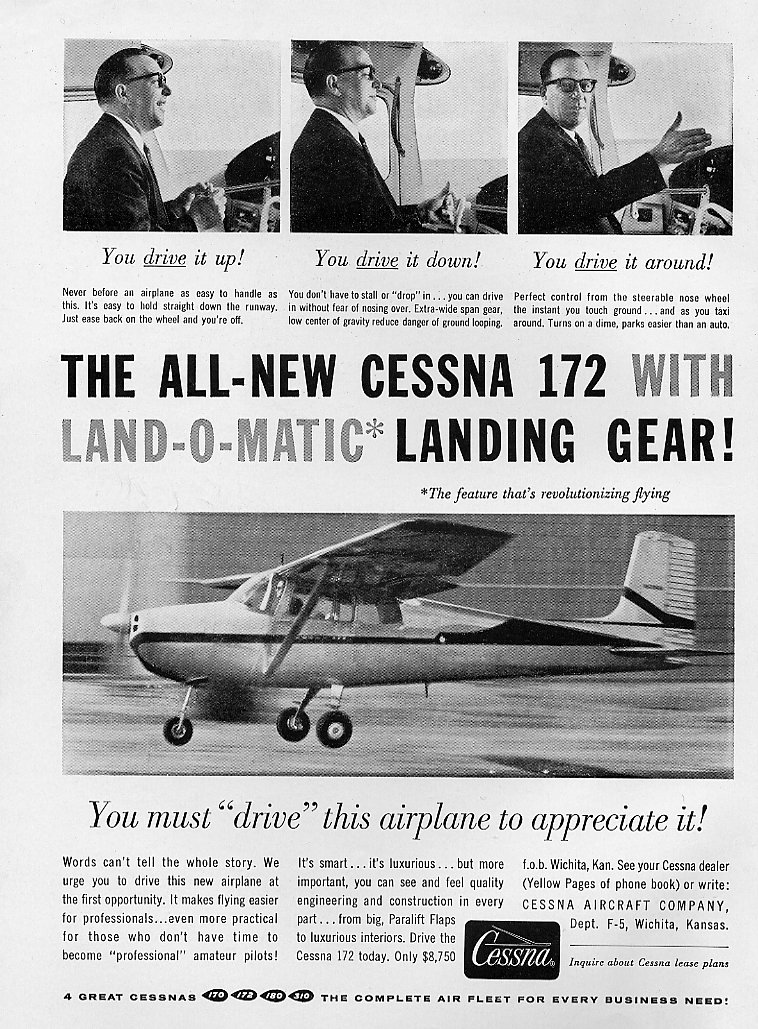Hey, look at those flaps! Definitely not 40, or 30, or maybe even 20, and not fully retracted. The plot thickens...JasonE wrote:And I thought they landed themselves
"You drive it up!"
"You drive it down!"
SOP to land with 10 degrees of flaps in 172?
Moderators: Right Seat Captain, lilfssister, North Shore, sky's the limit, sepia, Sulako
Re: SOP to land with 10 degrees of flaps in 172?
Re: SOP to land with 10 degrees of flaps in 172?
I'll just say that this isn't something I "heard somewhere", it comes directly from the two schools involved.5x5 wrote:This place makes me laugh sometimes - but only because I'm too socially insecure to cry.
Someone makes an anonymous comment about something they've heard related to training somewhere and suddenly any number of posters
Also, both these schools do in fact teach short-field landings with full flaps.
Re: SOP to land with 10 degrees of flaps in 172?
Ask them.
Or PM me the details and I'll ask - I'm not shy.
Or PM me the details and I'll ask - I'm not shy.
DId you hear the one about the jurisprudence fetishist? He got off on a technicality.
Re: SOP to land with 10 degrees of flaps in 172?
Ask who what? The reason for this SOP has already been posted earlier in this thread by someone who knows.photofly wrote:Ask them.
Or PM me the details and I'll ask - I'm not shy.
Re: SOP to land with 10 degrees of flaps in 172?
Which post was that?
DId you hear the one about the jurisprudence fetishist? He got off on a technicality.
Re: SOP to land with 10 degrees of flaps in 172?
For all of the common 100 series Cessnas, the extension of at least 10, though up to 20 flap increases the slower speed effectiveness of the elevator. I have found this a useful trick when having to taxi across rough ground or gravel, and wanting the nose light.
To experience the phenomenon for yourself in the 150/152/172/182 of your choice, try the following: With some open runway or apron ahead of you, pointed into a slight breeze if there is one; leave the flaps up, hold the wheel all the way nose up, open the throttle to at least 2000 RPM. Release the brakes so the plane can roll 5 to 10 feet, and note how much the nose comes up. Now, repeat with each of 10, and 20 flap selected. Expect to see the nose come up higher, and the effect has been shown: All other things being equal, the flap extension will affect elevator effectiveness. As silly as it sounds, use caution not to bang the tail, my 150 would touch the tail to the ground if I let it doing this.
Which means that though I'm not keen on physiologically limiting a pilots thinking to "should use 10", the use of even 10 flap will enable pilots to preserve nosewheels better than zero flap landings.
To experience the phenomenon for yourself in the 150/152/172/182 of your choice, try the following: With some open runway or apron ahead of you, pointed into a slight breeze if there is one; leave the flaps up, hold the wheel all the way nose up, open the throttle to at least 2000 RPM. Release the brakes so the plane can roll 5 to 10 feet, and note how much the nose comes up. Now, repeat with each of 10, and 20 flap selected. Expect to see the nose come up higher, and the effect has been shown: All other things being equal, the flap extension will affect elevator effectiveness. As silly as it sounds, use caution not to bang the tail, my 150 would touch the tail to the ground if I let it doing this.
Which means that though I'm not keen on physiologically limiting a pilots thinking to "should use 10", the use of even 10 flap will enable pilots to preserve nosewheels better than zero flap landings.


